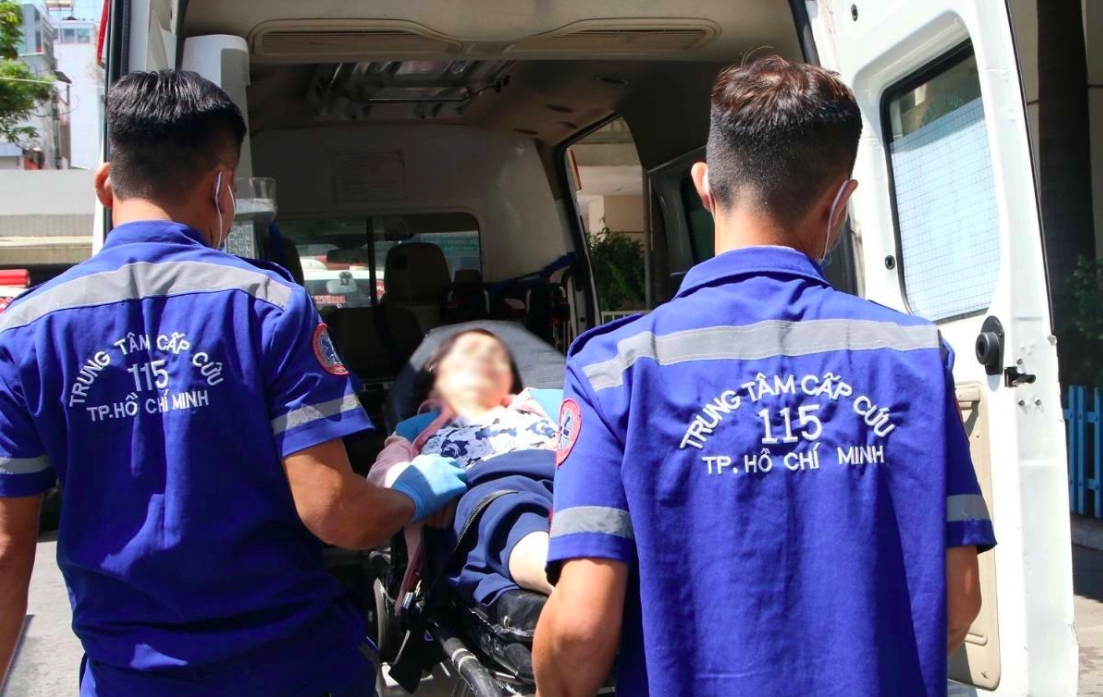This information was shared by Ha Anh Duc, Director of the Medical Examination and Treatment Management Department under the Ministry of Health, at a workshop on developing the pre-hospital emergency care project for 2025-2030 on 23/9. The agency is finalizing this project to save lives during the critical period, enabling early intervention and reducing mortality and complications.
According to reports and surveys in major cities like Hanoi and Ho Chi Minh City, the average time for a 115 ambulance to reach an emergency scene currently ranges from 10 to 30 minutes, or even longer, depending on the location, time of day, and traffic. This time is significantly higher in suburban or rural areas.
For example, some reports in Ho Chi Minh City indicate an average response time of 15-20 minutes in heavy traffic. Experts agree that this is too long compared to the "golden time" (typically under 10 minutes) in emergencies like strokes or cardiac arrests.
 |
Ho Chi Minh City’s 115 emergency team assists a traffic accident victim. Photo: Anh Thu. |
Ho Chi Minh City’s 115 emergency team assists a traffic accident victim. Photo: Anh Thu.
By 2030, the project aims to consolidate the national pre-hospital emergency care system and integrate it into a national management platform. All emergency personnel will be licensed, and 3 million people will receive basic first aid training. A key feature of the project is the consolidation of emergency hotlines 113, 114, and 115 into a single number operated by the Ministry of Public Security. This integrated system will connect police, medical, fire, and rescue forces, reducing response times.
Deputy Minister of Health Tran Van Thuan stated that pre-hospital emergency care is the "first line of response" in any healthcare system. "A delay in even one link can cost lives and result in severe disabilities," he said. He emphasized that a smoothly functioning emergency chain significantly increases the number of lives saved.
However, the Deputy Minister also acknowledged existing challenges: an incomplete legal framework, a shortage of specialized personnel, inadequate equipment, and many 115 centers meeting only a fraction of the actual demand.
To address these issues, the project will be piloted in six provinces: Bac Ninh, Hai Phong, Ha Tinh, Da Nang, Khanh Hoa, and An Giang. This phase will focus on surveys, model development, and personnel training. Preparations include assessing ambulance quality and developing training programs for medical staff, security forces, and the public. Nationwide expansion and system standardization will follow in 2027-2030.
Deputy Minister Thuan requested that ministries and agencies review regulations and encourage pilot provinces to propose suitable models. He also called on central hospitals to provide "professional mentorship" and promote communication to popularize first aid skills within the community.
Le Nga












